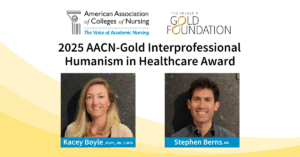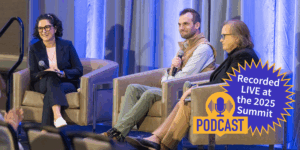 This post is part of our series of Research Roundups — a list of recently published studies on humanism in medicine. If you would like to be notified each time a Research Roundup is published, send an email to bking@gold-foundation.org with the subject line “Subscribe RR”.
This post is part of our series of Research Roundups — a list of recently published studies on humanism in medicine. If you would like to be notified each time a Research Roundup is published, send an email to bking@gold-foundation.org with the subject line “Subscribe RR”.
Compassion, guilt and innocence: An fMRI study of responses to victims who are responsible for their fate
Fehse K, Silveira S, Elvers K, Blautzik J. Soc Neurosci. 2014 Nov 14:1-10.
Researchers used fMRI to examine whether people responded differently to other people’s misfortunes depending on whether the victim was responsible for the event that occurred. Results imply that regulatory mechanisms of compassion are related to the perception of responsibility.
The prevalence of social and behavioral topics and related educational opportunities during attending rounds
Satterfield JM, Bereknyei S, Hilton JF, Bogetz AL, Blankenburg R, et al. Acad Med. 2014 Nov;89(11):1548-57.
80 inpatient ward teams were observed to determine the frequency of social and behavioral science (SBS) topics during attending rounds. 97% of teams had at least one SBS topic arise per patient. Common topics were pain (62%), nutrition (53%), social support (52%), and resources (39%). When topics were raised, 38% of teams’ responses were positive. Most services were more learner-centered than patient-centered.
Specialties differ in which aspects of doctor communication predict overall physician ratings
Quigley DD, Elliott MN, Farley DO, Burkhart Q, Skootsky SA, Hays RD. J Gen Intern Med. 2014 Mar;29(3):447-54.
Researchers used CAHPS data from 58,000 adults to examine how often patients felt that their physician explains things; listens carefully; gives easy-to-understand instructions; shows respect; and spends enough time. Physicians showing respect was the most important aspect of communication for 23/28 specialties. Three of five communication items varied significantly across specialties in their associations with the overall rating.
Resident experiences of informal education: How often, from whom, about what and how
Varpio L, Bidlake E, Casimiro L, Hall P, Kuziemsky C, et al. Med Educ. 2014 Dec;48(12):1220-34.
Researchers analyzed 60 hours of observation data from a palliative care hospice and a pediatric hospital to identify instances of informal intraprofessional and interprofessional education and categorize these instances by CanMEDS Role and teaching technique. Results showed that 84% of GME-level informal education was physician-led and 15% was nurse-led.
Reciprocal empathy and working alliance in terminal oncological illness: The crucial role of patients’ attachment style
Calvo V, Palmieri A, Marinelli S, Bianco F, Kleinbub JR. J Psychosoc Oncol. 2014;32(5):517-34.
This study assessed the relation between attachment styles, patient-caregiver reciprocal empathy, and patient-physician working alliance in the terminal phase of an oncological disease. 37 end-stage cancer patients, their physicians and their caregivers were given attachment-style and empathy assessments when they arrived at hospice and one week later. Results showed that patients’ attachment security plays a crucial role in the relation with their own caregiver and with the physician, even at the terminal phase.
Distress among matriculating medical students relative to the general population
Brazeau CM, Shanafelt T, Durning SJ, Massie FS, Eacker A, et al. Acad Med. 2014 Nov;89(11):1520-5.
Over 500 matriculating medical students from 6 US medical schools were surveyed during orientation. Researchers found that compared to other college graduates, matriculating medical students had lower rates of burnout and depression symptoms and scored higher on measures of quality of life. These finding support concerns that medical training contributes to the deterioration of mental health in developing physicians.
APGF Related Publications
The Gold-Hope Tang, MD 2014 Humanism in Medicine Essay Contest Second Place Winner: iThink iCare
Asokan I. Acad Med. 2014 Nov;89(11):1460-1.
“It is perhaps unsurprising that medical students of this generation emphasize care delivery within the context of technology. Rapid diagnoses, lab values, and detailed descriptions of medical conditions now emerge within seconds of simply touching a screen. The age-old adage of “sticking to the books” thus remains foreign to many of us, as we so rarely rely on them…”
 This post was written by Brandy King, Head of Information Services at The Arnold P. Gold Foundation Research Institute
This post was written by Brandy King, Head of Information Services at The Arnold P. Gold Foundation Research Institute


